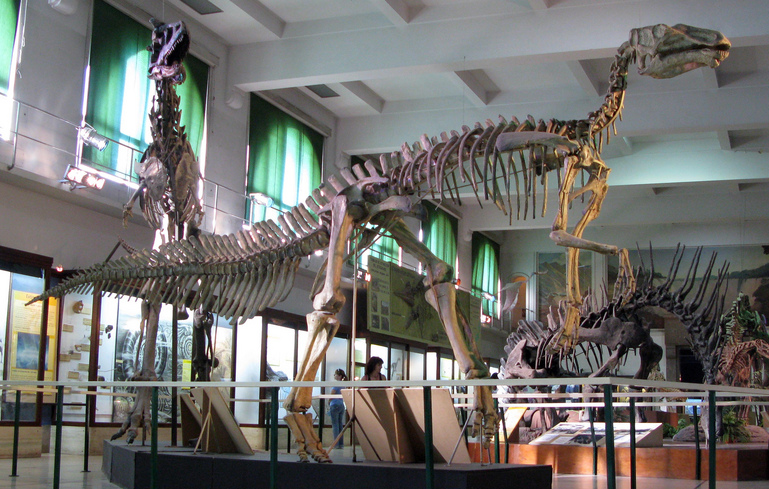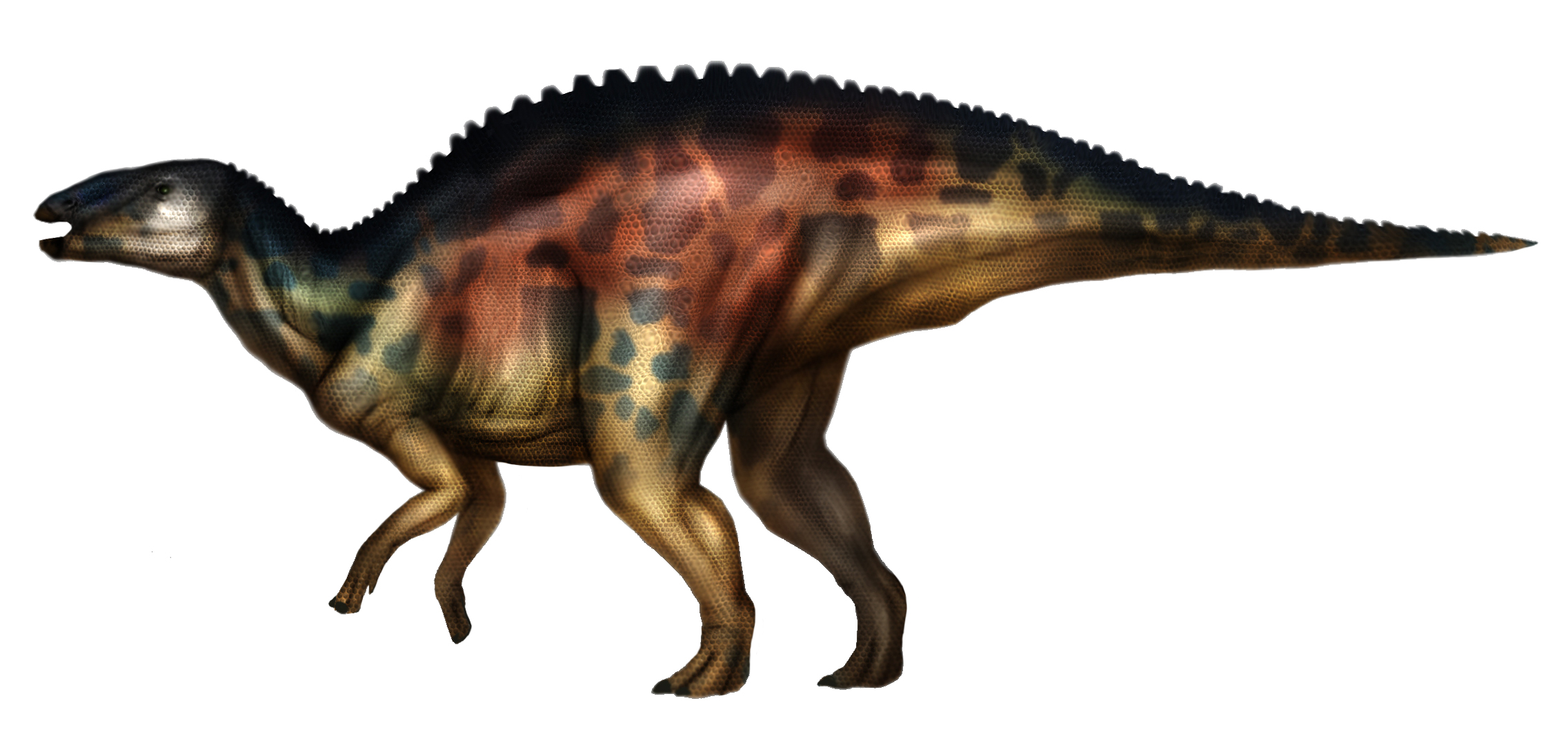|
Gonkoken
''Gonkoken'' (meaning "similar to a wild duck or swan") is an extinct genus of hadrosauroid ornithopod dinosaur from the Late Cretaceous Dorotea Formation of Chilean Patagonia. The genus contains a single species, ''G. nanoi'', known from disarticulated bones of multiple individuals. Discovery and naming The ''Gonkoken'' fossil specimens were discovered beginning in 2013 in sediments of the Dorotea Formation in the Río de las Chinas Valley, Estancia Cerro Guido, in Magallanes Region, Chile. The holotype specimen, CPAP 3054, consists of a right ilium. Additional material assigned as paratype includes the disarticulated bones of at least three individuals. These bones include skull material, cervical, dorsal, and caudal vertebrae, ribs, partial pectoral and pelvic girdles, and arm and leg bones. In 2023, Alarcón-Muñoz ''et al''. described ''Gonkoken nanoi'' as a new genus and species of hadrosauroid ornithopod based on these fossil remains. The generic name, "''Gonkoken''" ... [...More Info...] [...Related Items...] OR: [Wikipedia] [Google] [Baidu] |
Austrokritosauria
Saurolophinae is a subfamily of hadrosaurid dinosaurs. It has since the mid-20th century generally been called the Hadrosaurinae, a group of largely non-crested hadrosaurs related to the crested sub-family Lambeosaurinae. However, the name Hadrosaurinae is based on the genus ''Hadrosaurus'' which was found in more recent studies to be more primitive than either lambeosaurines or other traditional "hadrosaurines", like ''Edmontosaurus'' and ''Saurolophus''. As a result of this, the name Hadrosaurinae was dropped or restricted to ''Hadrosaurus'' alone, and the subfamily comprising the traditional "hadrosaurines" was renamed the Saurolophinae. Recent phylogenetic work by Hai Xing indicates that ''Hadrosaurus'' is placed within the monophyletic group containing all non-lambeosaurine hadrosaurids. Under this view, the traditional Hadrosaurinae is resurrected, with the Hadrosauridae being divided into two clades: Hadrosaurinae and Lambeosaurinae. Classification Saurolophinae was first d ... [...More Info...] [...Related Items...] OR: [Wikipedia] [Google] [Baidu] |
Dorotea Formation
The Dorotea Formation is a geological formation in the Río de Las Chinas Valley of the Magallanes Basin in Patagonian Chile whose strata date back to the Campanian to Maastrichtian of the Late Cretaceous.Dorotea Formation at .org Description The Dorotea Formation was first described by Katz in 1963. The formation comprises s with frequent conglomerate lenses, concretionary levels ...[...More Info...] [...Related Items...] OR: [Wikipedia] [Google] [Baidu] |
2023 In Archosaur Paleontology
This article records new taxa of every kind of fossil archosaur that were scheduled to be Binomial nomenclature, described during 2023, as well as other significant discoveries and events related to the paleontology of archosaurs that were published in 2023. Pseudosuchians New pseudosuchian taxa General pseudosuchian research * Evidence of the impact of the interplay of abiotic and biotic processes on the evolution of pseudosuchians is presented by Payne ''et al.'' (2023). * A study on the biomechanical properties of the skull of ''Riojasuchus, Riojasuchus tenuisceps'' is published by Taborda, Von Baczko & Desojo (2023), who propose that ''R. tenuisceps'' could have had a wading habit, feeding on small-sizey prey caught from the shoreline. * A study on the bone histology of ''Decuriasuchus, Decuriasuchus quartacolonia'' is published by Farias ''et al.'' (2023), who interpret their findings as indicative of early ontogenetic stage of known specimens, which might have stay ... [...More Info...] [...Related Items...] OR: [Wikipedia] [Google] [Baidu] |
Secernosaurus
''Secernosaurus'' (meaning "severed lizard") is a genus of herbivorous dinosaur. ''Secernosaurus'' was a hadrosaur, a "duck-billed" dinosaur which lived during the Late Cretaceous. ''Secernosaurus'' and its close relatives lived in South America, unlike most hadrosaurs, which lived in the Laurasian continents of Eurasia and North America. It has been suggested that the ancestors of ''Secernosaurus'' crossed into South America when a land bridge temporarily formed between North and South America during the Late Cretaceous and allowed biotic interchange between the two continents. History of research The holotype of ''Secernosaurus koeneri'' was collected in 1923 as part of an expedition by the Field Museum led by J. B. Abbott. However, the specimen was not studied until the 1970s. In 1979, Brett-Surman named ''Secernosaurus''. Though hadrosaurid specimens from South America had been described before, ''Secernosaurus koeneri'' was the first species of South American hadrosaurid to ... [...More Info...] [...Related Items...] OR: [Wikipedia] [Google] [Baidu] |
Kelumapusaura
''Kelumapusaura'' (meaning "red earth lizard") is a genus of saurolophine hadrosaur from the Late Cretaceous Allen Formation in what is now Patagonia in Argentina. The type and only species is ''K. machi'', known from a bonebed of various individuals. Discovery The generic name, "''Kelumapusaura''," combines "kelumapu," the Mapudungun word for "red earth," and the feminine form of the Greek "sauros," meaning "lizard." The specific name, "'' machi''," is derived from a word from the Mapuche people for "shaman." Description The describing authors estimate that ''Kelumapusaura'' would have been long. Classification Rozadilla ''et al''. (2022) named ''Kelumapusaura'' and the closely related '' Huallasaurus'', recovering them in a clade of entirely South American saurolophines. In the 2023 description of the South American hadrosauroid '' Gonkoken'', Alarcón-Muñoz ''et al''. recovered similar results, implementing a modified version of the phylogenetic matrix of Rozadilla ''et a ... [...More Info...] [...Related Items...] OR: [Wikipedia] [Google] [Baidu] |
Huallasaurus
''Huallasaurus'' (meaning "duck lizard") is an extinct genus of saurolophine hadrosaur from the Late Cretaceous Los Alamitos Formation of Patagonia in Argentina. The type and only species is ''H. australis''. Originally named as a species of ''Kritosaurus'' in 1984, it was long considered a synonym of ''Secernosaurus'' before being recognized as its own distinct genus in a 2022 study, different from other members of Kritosaurini. Discovery The generic name, "''Huallasaurus''," combines "hualla," the Mapudungun word for "duck," and the Greek "sauros," meaning "lizard." The specific name, "''australis''," is derived from the Latin "australis," meaning "southern," after the discovery of the holotype specimen in southern Argentina. Classification Rozadilla ''et al''. (2022) named ''Huallasaurus'' and the closely related ''Kelumapusaura'', recovering them in a clade of entirely South American saurolophines. In the 2023 description of the South American hadrosauroid '' Gonkoken'', ... [...More Info...] [...Related Items...] OR: [Wikipedia] [Google] [Baidu] |
Bonapartesaurus
''Bonapartesaurus'' (meaning "Bonaparte's lizard", named after José Bonaparte) is an extinct genus of herbivorous ornithopod dinosaur belonging to Hadrosauridae, which lived in the area of modern Argentina during the Campanian and Maastrichtian stages of the Late Cretaceous. Discovery and naming The remains were excavated by the Argentine paleontologist Jaime Powell and collaborators in 1984 and described by him in 1987, where he identified the dinosaur remains as a possible "indeterminate lambeosaurine", comparing it mainly with the genera ''Hypacrosaurus'' and '' Barsboldia'' due to great size of the neural spines. In 2010, Rubén D. Juárez Valieri and his team erected a new genus and hadrosaurid species called '' Willinakaqe salitralensis'' from different materials found in 2 different locations (Salitral Moreno and Islas Malvinas) of the Allen Formation, which are mostly housed in the collection of the Carlos Ameghino Provincial Museum, where the specimen was examined by ... [...More Info...] [...Related Items...] OR: [Wikipedia] [Google] [Baidu] |
Late Cretaceous
The Late Cretaceous (100.5–66 Ma) is the more recent of two epochs into which the Cretaceous Period is divided in the geologic time scale. Rock strata from this epoch form the Upper Cretaceous Series. The Cretaceous is named after ''creta'', the Latin word for the white limestone known as chalk. The chalk of northern France and the white cliffs of south-eastern England date from the Cretaceous Period. Climate During the Late Cretaceous, the climate was warmer than present, although throughout the period a cooling trend is evident. The tropics became restricted to equatorial regions and northern latitudes experienced markedly more seasonal climatic conditions. Geography Due to plate tectonics, the Americas were gradually moving westward, causing the Atlantic Ocean to expand. The Western Interior Seaway divided North America into eastern and western halves; Appalachia and Laramidia. India maintained a northward course towards Asia. In the Southern Hemisphere, Aus ... [...More Info...] [...Related Items...] OR: [Wikipedia] [Google] [Baidu] |
Specific Name (zoology)
In zoological nomenclature, the specific name (also specific epithet, species epithet, or epitheton) is the second part (the second name) within the scientific name of a species (a binomen). The first part of the name of a species is the name of the genus or the generic name. The rules and regulations governing the giving of a new species name are explained in the article species description. For example, the scientific name for humans is ''Homo sapiens'', which is the species name, consisting of two names: ''Homo'' is the " generic name" (the name of the genus) and ''sapiens'' is the "specific name". Etymology Historically, ''specific name'' referred to the combination of what are now called the generic and specific names. Carl Linnaeus, who formalized binomial nomenclature, made explicit distinctions between specific, generic, and trivial names. The generic name was that of the genus, the first in the binomial, the trivial name was the second name in the binomial, and the ... [...More Info...] [...Related Items...] OR: [Wikipedia] [Google] [Baidu] |
Huehuecanauhtlus
''Huehuecanauhtlus'' is a genus of hadrosauroid dinosaur known from the Late Cretaceous (Santonian stage) of Michoacán, western Mexico. It contains a single species, ''Huehuecanauhtlus tiquichensis''. Discovery ''Huehuecanauhtlus'' is known only from two individuals. The holotype Instituto de Geología, Universidad Nacional Autónoma de México, IGM 6253 represented by fragmentary skull (partial left maxilla and dentary fragment) and postcranial skeleton including four cervical vertebrae, nine dorsal vertebrae, four dorsal neural spines, one dorsal diapophysis, five right dorsal ribs, seven left dorsal ribs, seven sacral neural spines, seven sacral diapophyses, one caudal diapophysis, three caudal vertebrae, two caudal neural spine, eight fragmentary ossified tendons, left and right partial Ilium (bone), ilium, and left and right partial Pubis (bone), pubis. The smaller paratype, IGM 6254, is represented by fragment of left dentary, two teeth, and one cervical prezyg ... [...More Info...] [...Related Items...] OR: [Wikipedia] [Google] [Baidu] |








